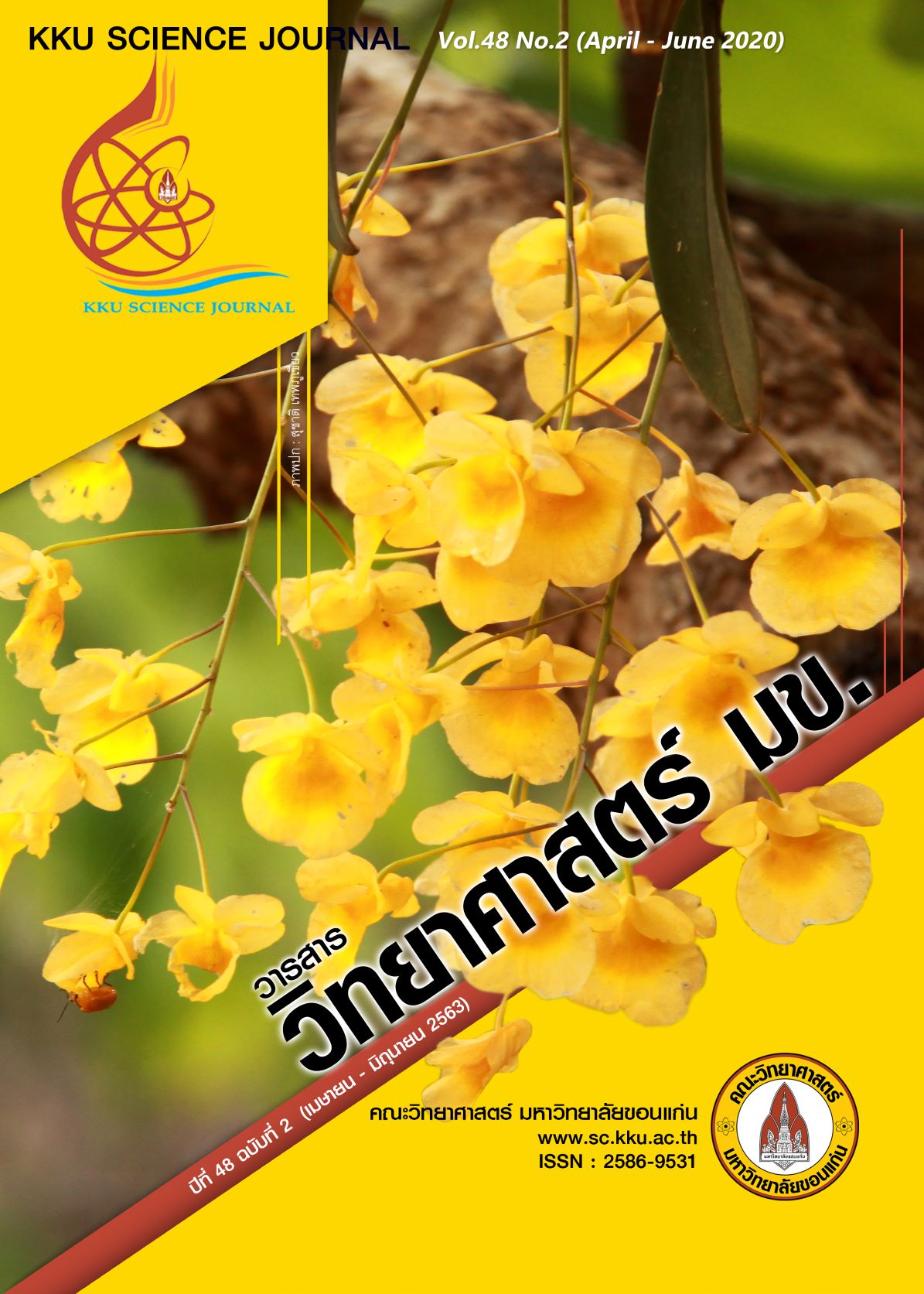Land Use Changes in Mae Tao Watershed Having Zinc Mining, Mae Sod District, Tak Province Using Applied Remote Sensing Technology
Main Article Content
Abstract
This research aims to study land use changes in the right upper Mae Tao watershed situated in Mae Sod district, Tak province, where the largest zinc ore deposit of the country was found. Most watershed area in the past covered by forests, and some subsistence agriculture. Zine mine was taken during 1974 and 2016, and subsequent forest clearing for agriculture resulted in changing proportion of different land use. The present agriculture is mainly economic crops such as fruit trees, vegetables, maize, sugarcane, cassava, etc. The study was divided into 4 periods according to mining: (1) pre-mining (period 1), (2) during mining as before forest plantation (period 2) (3) during mining as after forest plantation (period 3), and (4) post-mining (period 4). The methods included field survey and remote sensing technology for classifying types of land use. The results showed that percentage proportions of natural forest to the lower watershed (MT-2) in the four periods were 73.3, 63.6, 41.4 and 35.9, respectively. Other land use had different values: agricultural land = 25.7, 29.8, 15.9 and 17.2; mine land = 1.0, 6.6, 14.3 and 1.3; and plantation forest = 0, 0, 18.3 and 45.6. Agriculture was changed from for subsistence to commercial purpose. Natural forest was decreased progressively caused by mainly forest clearing for cultivation. Forest plantation in mine land, adjacent degraded forest land and bare forest land taken from the farmers increased the forest area proportion in the watershed, from 73.3% (period 1) to 81.5% (period 4). Local communities conserved the forest by establishing nine community forests. The restoration of Mae Tao watershed is important for developing Mae Sod district as the economic area for trade with Myanmar as the water source for communities and ecotourism, and should be followed the royal initiatives concerning integrated management of King Rama 9.
Article Details

This work is licensed under a Creative Commons Attribution-NonCommercial-NoDerivatives 4.0 International License.


